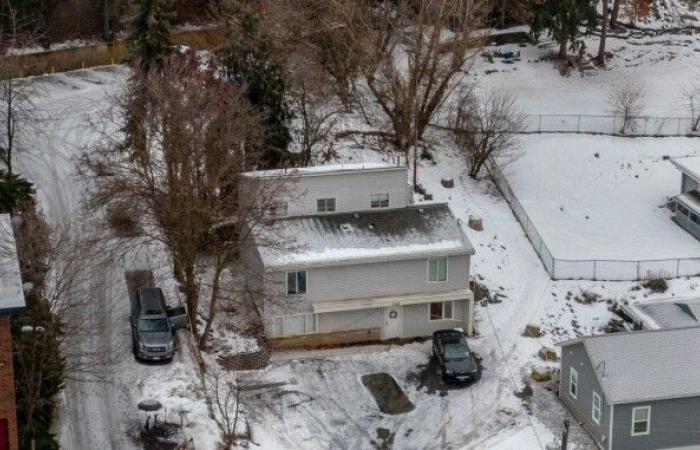On the night of Sunday 13 November, four students at the University of Idaho were found stabbed to death in their home. Two other students were found unharmed in the house.
Best friends Kaylee Goncalves (21) and Madison Mogen (21) were found murdered in their bedroom, while boyfriend and girlfriend Ethan Chapin (20) and Xana Kernodle (20) were found murdered in their bed.
On social media, theories about what could have happened immediately began to circulate. Several complained about the police’s lack of progress.
Six weeks later, on December 30, US authorities arrested 28-year-old Bryan Christopher Kohberger and charged him with premeditated murder. Kohberger was a doctoral candidate in criminology at a nearby university, Washington State University.
CHARGE: American authorities have arrested and charged 28-year-old Bryan Christopher Kohberger. Photo: POOL
Now the police are sharing information about the murders and what led them to the arrest of Kohberger.
American media, such as the New York Times, were quick to review the police’s information. Here are the ten most startling discoveries.
1) A roommate saw a masked man
The police have previously suggested that the two who were not injured had slept through the entire incident. It later became clear that a roommate woke up around 4am, which is when the police believe the attack started. In her witness statement, the friend explained that she woke up after hearing noises, an unknown man’s voice and someone crying.
She is said to have opened the door and seen a man with bushy eyebrows, wearing black clothes and a mask walk right past her and out the back door of the house. She has explained that she was paralyzed by fear, but must have managed to lock the door to her own room.
2) Found a knife at the scene – secured DNA
In the bed where best friends Madison Mogen and Kaylee Goncalves were found dead, police also found a leather holster belonging to a knife. From this the police were able to secure DNA, which later proved to match DNA secured from the home of Kohberger’s father.
3) The accused has applied for positions with the police
Bryan Kohberger has studied criminology and has shown a particular interest in forensic engineering. He has applied for positions with the police several times.
Last autumn, Kohberger applied for a scholarship with the police in Washington.
THE HOUSE: In this house, four students were found stabbed and killed on 13 November 2022. Photo: DAVID RYDER
4) Must have supervised the victims
The police state that a white van is said to have passed the house’s quiet street several times that evening. Surveillance images show that the car, a Hyandai Elantra, drove past the house a fourth time at 04.04 – when the police estimate that the crime started.
At 04.20, surveillance images show the car speeding away again.

EIGHT HOURS LATER: The authorities were only notified of the incident eight hours later. Photo: DAVID RYDER
5) The dog
Another surveillance camera is said to have recorded the sound of a dog that first barked, before it went limp and fell to the ground.
One of the victims, Kaylee Goncalves, had a dog that was found dead by police.
6) Not all victims slept
Police initially assumed all the victims were asleep when they were stabbed. However, the investigation shows that one of the victims, Xana Kernodle, received a food order at 04.00. Forensic investigations also show that her phone must have been active on the app TikTok at 04.12.

VÅKEN: Xana Kernodle is said to have received a food order just before the perpetrator struck. Photo: ZUMA Press Wire
7) Discovered the accused’s car
Following clues from surveillance footage, police began looking for a Hyundai Elantra. The car in question was found close to Washington State University, where the accused was studying at the time.
8) Phone evidence: Stalked the victims
By the end of December, the police should have gained access to Kohberger’s phone. Forensic investigations showed that he had visited the neighborhood where the murders took place twelve times prior to the murders.
On the night of the murder itself, Kohberger’s phone was disconnected from the network between 02:47 and 04:48. The police believe this was an attempt to hide his whereabouts.

MOURNING: The local community has reacted with anger and grief in the aftermath of the murders. It took six weeks before the police made an arrest. Photo: DAVID RYDER
9) Must have returned to the scene
The phone’s log also shows that Kohberger allegedly went back to the neighborhood where the murders took place at 09:12, five hours after the murders took place.
At the time, the police had still not been notified.
10) The police secured DNA
The phone evidence led the police to seek out Bryan Kohberger’s father’s home, where the two celebrated Christmas together.
From the rubbish bin outside the residence, the police secured DNA which the police believe with a preponderance of probability to be the father of the person who left DNA in the homes of the four murdered students. This via the holster for the knife that was found.

WILL HE BE CONVICTED? Will Bryan Kohberger be convicted, and what punishment will he receive? It is one of several questions that many are now asking. Photo: POOL
More unanswered questions
The police’s publication of information also opens up a whole new range of questions.
Perhaps the most burning question is why: What was the motive? Accused Bryan Kohberger claims he is innocent.
Other questions many people are now scratching their heads about are:
Why weren’t the two remaining roommates in the house attacked? Why wasn’t the roommate attacked when she saw the perpetrator, why weren’t the emergency services contacted until nearly eight hours later? What is the defendant’s mental state? How long can the accused have planned the crime?
What were the last few minutes like for Kaylee Goncalves, Madison Mogen, Ethan Chapin and Xana Kernodle? Has Kaylee Goncalves’ dog tried to protect them?
Idaho is one of the states that still practices the death penalty.











